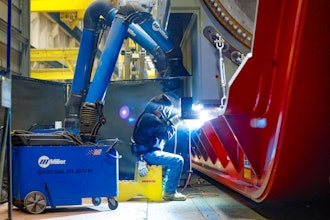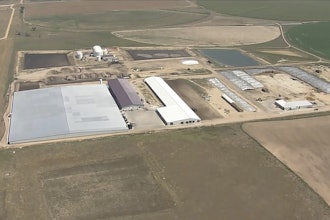
 Doug Stovall
Doug Stovall The National Safety Council says that a worker is injured on the job every seven seconds. That’s 4.5 million injuries per year. The pain and suffering that result from workplace injuries is incalculable and serves as motivation enough for manufacturers to do all they can to prevent accidents. But in terms of productivity, the cost is also steep: In 2016, more than 100,000,000 production days were lost due to on-the-job injuries.
Manufacturing and production sector jobs are among the top five occupations with the most workplace injuries. To address workplace hazards, manufacturers invest heavily in safety training, equipment, ergonomic workstations and other products and services to keep employees safe. But there’s one emerging technology that doesn’t get the attention it deserves as a safety aid: wireless power.
Wired or battery-powered devices like smoke and carbon monoxide detectors are common workplace safety measures, but wireless power has the potential to be a true game-changer. As manufacturing safety experts know, even when workers follow their safety training closely, they can encounter hazards that result from the use of wired or battery-powered devices, such as tripping over an extension cord used to light a dark area or falling in the dark due to the failure of battery-powered lighting.
Contact with equipment (getting struck, crushed or caught on machinery) and slips, trips and falls are among the most common workplace injuries. A wirelessly powered workplace can help workers avoid all of these hazards by giving them a way to see, hear or sense approaching danger. Here are 10 ways manufacturers can use wireless power to keep employees safer:
- Improve visibility in dark storage areas by strategically placing motion-sensitive lights that are powered wirelessly and don’t need electrical wiring, cords or batteries.
- Augment overhead lighting with wirelessly powered lights that can help employees avoid tripping or running into objects in tight spaces.
- Replace chargers for small devices with wireless power receivers, which eliminates charging stations and extension cords (a frequent tripping hazard).
- Use wirelessly powered devices to replace tethered counterparts, such as small robots and autonomous equipment, eliminating the need to maintain miles of cable.
- Replace or retrofit battery-operated safety devices, such as smoke detectors and environmental sensors, with devices equipped with wireless power receivers that don’t fail at critical times like batteries frequently do.
- Illuminate emergency exit pathways with wirelessly powered exit signs, path lights, and lights around emergency equipment, such as fire extinguishers, when an alarm is triggered.
- Reduce the risk of fire from poorly installed, worn, or exposed wires, especially in areas where there’s risk of electric shock, by using wireless power instead.
- Use wirelessly powered inventory sensors to eliminate the need for employees to manually check product levels.
- Add wirelessly powered backup cameras, driving data trackers, tire sensors, speed monitors and maintenance sensors to small vehicles like forklifts; in-vehicle alerts also help drivers operate more safely.
- Deploy always-on wireless power walkie-talkies to improve communication, which can help employees stay informed and avoid dangerous situations.
All of these measures can improve employee safety. And while that’s the most important advantage wireless power offers, it also eliminates some of the costs that prevent facilities from creating safer environments, such as wiring and build-out expenses.
Does wireless power sound like science fiction? If so, it won’t for long. The technology is already in use today, and demand is growing, especially with the explosion of Internet of Things (IoT) devices. The rapid growth of the IoT is driving demand for wireless power to deliver energy reliably and efficiently.
Today, there are already technologies that make it possible to safely deliver power over a distance. One application allows warehouses and factories to install multiple wireless power transmitters and link them throughout the facility, using ceiling tiles as a medium. In this scenario, wireless power-enabled devices send beacon signals when transmitters are in range, bouncing off objects and walls (but not people), and the transmitter safely sends power back using the same path.
The use of wireless power is becoming more mainstream every day—within a decade, it will be the norm rather than the exception. That’s good news for manufacturing leaders who want to ensure that devices are always powered up and ready for use without low battery warnings and charging downtime. And it’s great news for leaders who want to improve employee safety.
Doug Stovall is Chief Revenue Officer at Ossia.






















